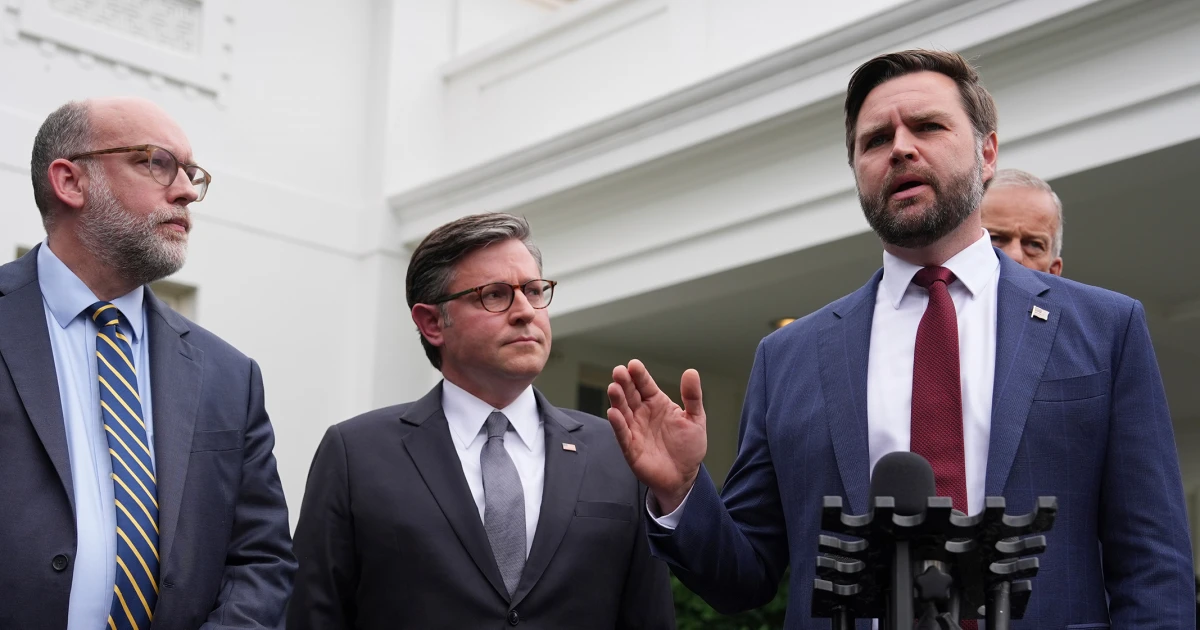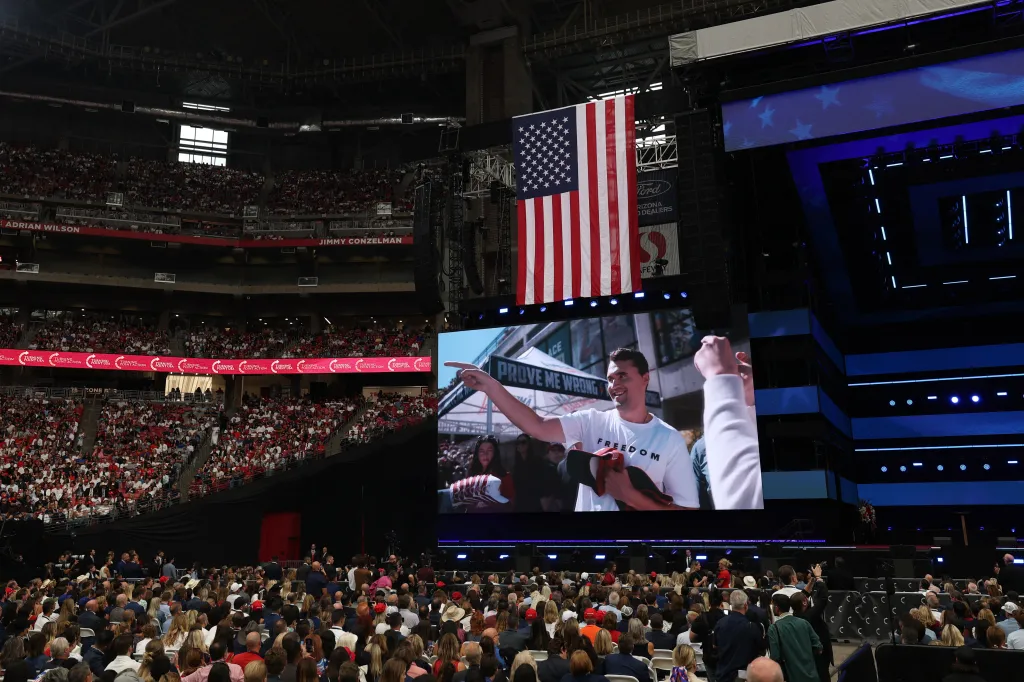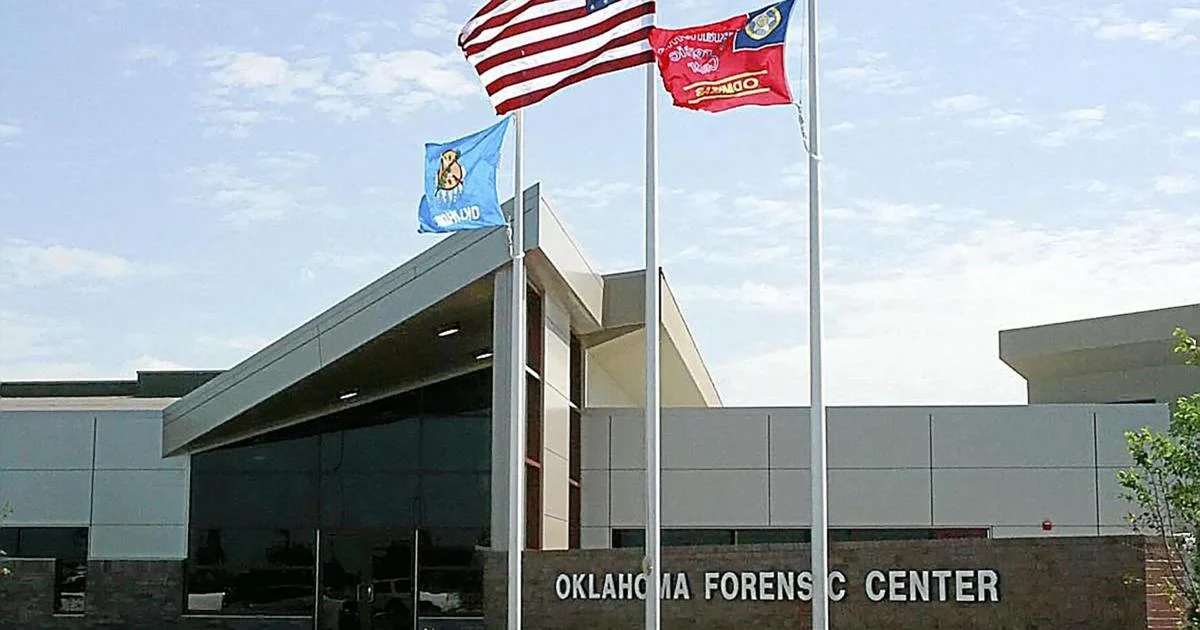
Welcome to the online version of From the Politics Desk, a newsletter that brings you the NBC News Politics team’s latest reporting and analysis from the White House, Capitol Hill and the campaign trail.
With the government set to shut down after midnight tonight, Jonathan Allen explores how both parties are staking out unfamiliar political territory. Plus, Steve Kornacki breaks down the challenges and opportunities facing Republicans in the New Jersey governor’s race.
Sign up to receive this newsletter in your inbox every weekday here.
— Adam Wollner
A government shutdown role reversal
Analysis by Jonathan Allen
Not so long ago, JD Vance voted repeatedly to shut down the federal government. At the time, he was a Republican senator, and there was a Democratic president.
In the last Congress, Vance voted against stopgap government spending bills in September and November of 2023 and in January and February of 2024. They were all enacted into law over the objections of his faction of conservative budget hawks, and he did not vote at all on subsequent emergency bills in September and December of 2024, when he was on the campaign trail and after he was elected vice president.
But even with that record, there was Vance at the White House on Monday, following a meeting with President Donald Trump and congressional leaders in both parties, excoriating Democrats for threatening to do what he voted to do in the past.
“You don’t shut the government down,” Vance said. “You don’t use your policy disagreements as leverage to not pay our troops and not have essential services.”
He also pointed out that it’s usually Democrats, including Senate Minority Leader Chuck Schumer of New York, who insist on keeping the government open while negotiating on points of disagreement.
“I believe allowing Donald Trump to take even much more power via a government shutdown is a far worse option,” Schumer said during the last funding fight in March. “I will vote to keep the government open and not shut it down.”
The role reversal illustrates a Washington idiom: where you sit is where you stand.
Now Vance sits in the White House, where a government shutdown presents an opportunity to potentially further slash the federal bureaucracy, but also a risk that voters punish Republicans, who control the presidency and both chambers of Congress.
And Schumer, a former majority leader who took criticism from within his own party for capitulating to the GOP’s demands earlier this year, now sits on a hotter seat.
If Democrats fold without winning concessions from Trump — particularly an extension of Affordable Care Act subsidies — Schumer and his caucus will face the wrath of their own voters. Similarly, Trump and Republicans risk alienating their own base if they give in to Democrats.
The ironic twist: Trump could face a public backlash over rising insurance premiums if he doesn’t give Democrats the ACA extension they seek. In other words, they’re asking him to accept a policy that figures to help his party’s chances in the midterms, even though it is at odds with GOP orthodoxy.
For now, both sides say they will win the political aftermath of a shutdown showdown, with the other being blamed for dysfunction. And, at least for now, they both seem perfectly happy to fool around and find out if they’re right.
So while Vance and Schumer have reversed positions on shutdowns — swinging from one philosophical pole to the other — they are consistent in their pursuit of scoring political points.
Get caught up on our latest shutdown coverage:
Government barrels toward shutdown as the blame game heats up, by Scott Wong, Frank Thorp V and Kyle Stewart
Chuck Schumer and Hakeem Jeffries face a big leadership test in the shutdown fight, by Melanie Zanona, Julie Tsirkin and Scott Wong
Members of Congress still get paid during a government shutdown, by Scott Wong and Frank Thorp V
Unions file suit over Trump’s ‘illegal’ plan to fire many federal workers in a shutdown, by Ryan J. Reilly
What happens when the government shuts down, by Raquel Coronell Uribe and Megan Lebowitz
How a shutdown could affect markets and the economy, by Steve Kopack
Follow live updates →
How Trump and Jack Ciattarelli made gains in New Jersey taking two different paths
Analysis by Steve Kornacki
New Jersey may be emerging as the marquee venue in November’s elections, with fresh indications that Republican gubernatorial nominee Jack Ciattarelli has a real chance to defy the state’s partisan bent and off-year voting history.
An Emerson College Polling/PIX11/The Hill poll last week put Ciattarelli in a 43%-43% tie with Rep. Mikie Sherrill, the Democratic nominee. Sherrill has found herself trying to fend off controversy related to her military records and faces potential fallout from a Ciattarelli ad that shows footage of her struggling to respond to a seemingly mundane question during an interview.
That said, New Jersey remains a blue state. Other recent public surveys still show Sherrill in the lead. And in governors’ races, New Jersey voters have also exhibited a pronounced tendency to side against the party that controls the White House.
This presents significant obstacles for Ciattarelli, especially with the Emerson poll giving President Donald Trump a 41% approval rating in the state. But the unpopularity of the Democrats who run Trenton may give him the means to offset this. In the same poll, outgoing Democratic Gov. Phil Murphy’s approval rating is just 35%.
The prospect of pulling off an upset win in the Garden State is tantalizing for Republicans after the strides they’ve made in recent statewide contests. In 2020, Trump was crushed by Joe Biden by 16 points in New Jersey. But the following year, Ciattarelli fell just 3 points short when he challenged Murphy. And last year, Trump lost to Kamala Harris by six points — one of his biggest improvements anywhere in the country.
What’s notable in looking at these past races is that the gains Trump made last year don’t overlap that much with those that Ciattarelli made in 2021. Instead, each attained surprising levels of support in areas where the other struggled.
If we look at each municipality in the state and use Trump’s 2020 drubbing as a baseline, we find that there are 117 municipalities where Ciattarelli in 2021 improved off that performance by at least 10 points more than Trump did in 2024. These municipalities tend to be more white, wealthy and college-educated than New Jersey as whole.
Conversely, we also find 59 municipalities where Trump’s 2024 improvement off that 2020 baseline was at least 10 points better than Ciattarelli’s in 2021. These places tend to be more densely populated, diverse and blue-collar.
Read more from Steve →
That’s all From the Politics Desk for now. Today’s newsletter was compiled by Adam Wollner and Owen Auston-Babcock.
If you have feedback — likes or dislikes — email us at politicsnewsletter@nbcuni.com



